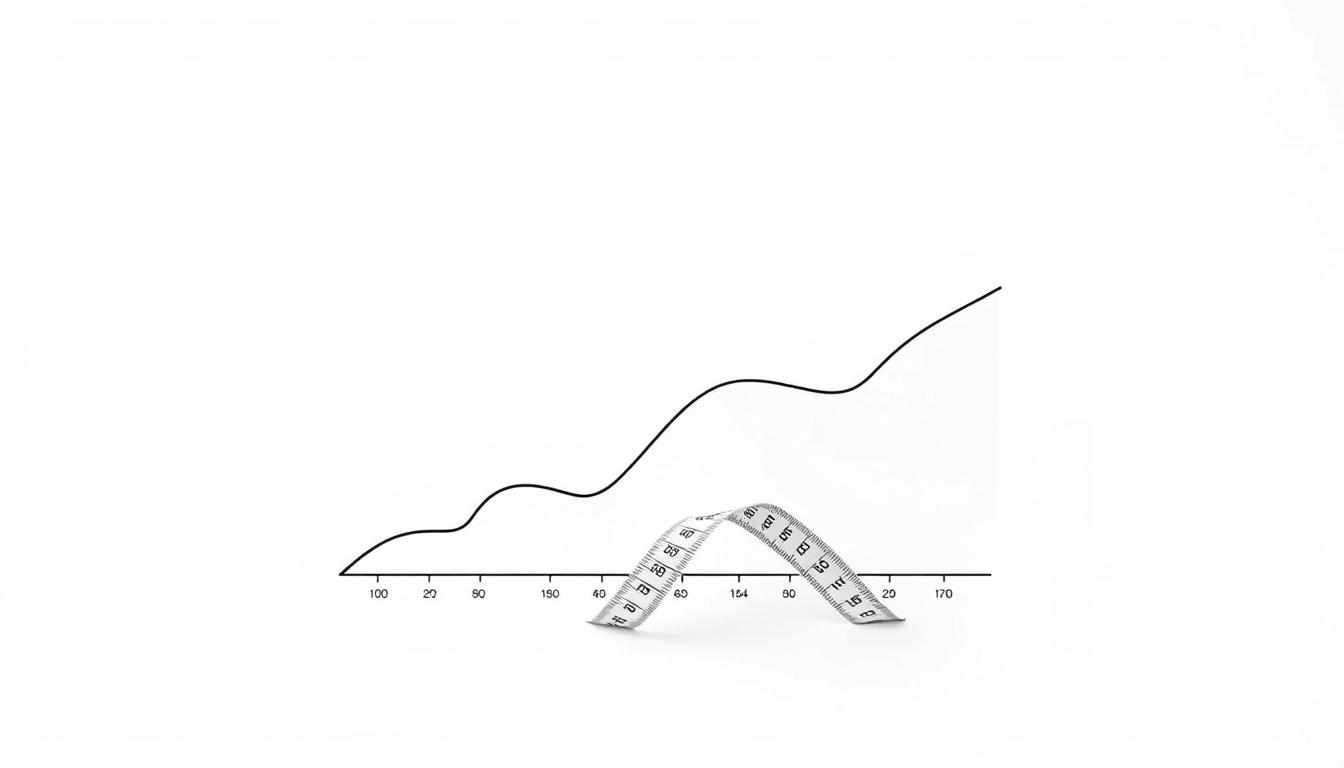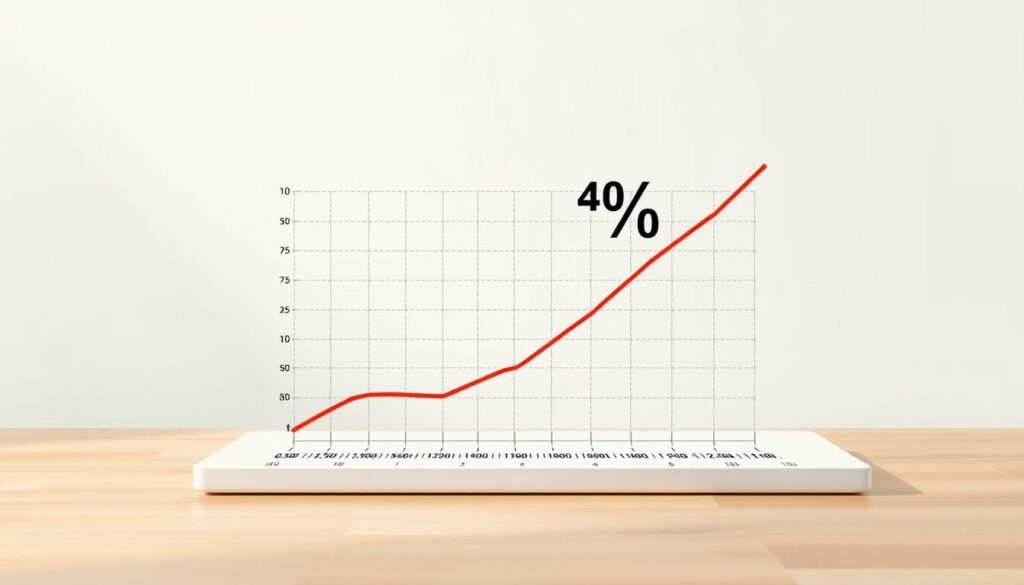“The greatest wealth is health.” – Virgil. This ancient wisdom highlights the importance of health and wellness. When it comes to weight loss, tracking progress is crucial for success.
Measuring progress isn’t just about the number on the scale; it’s about understanding the percentage of weight loss relative to your starting weight. This approach provides a more personalized and motivating way to track your journey.
By focusing on weight loss percentage, you can set realistic goals and celebrate achievements that are meaningful to your individual journey. We’ll explore the simple formula and various methods to calculate weight loss percentage, empowering you to take control of your progress.
Key Takeaways
- Understanding weight loss percentage provides a personalized approach to tracking progress.
- Calculating weight loss percentage helps set realistic expectations and goals.
- Tracking weight loss as a percentage can be more motivating than absolute weight measurements.
- The formula to calculate weight loss percentage is straightforward and easy to apply.
- Focusing on percentage rather than pounds offers a more nuanced view of progress.
Why Tracking Weight Loss Percentage Matters
The significance of tracking weight loss percentage lies in its ability to provide a personalized measure of progress. Calculating your weight loss as a percentage may be a healthier and more sustainable approach than counting pounds or kilograms.
Tracking weight loss percentage offers several benefits over absolute weight measurements. Let’s explore some of these advantages.
Benefits of Percentage vs. Absolute Weight
Tracking weight loss as a percentage provides better context than absolute weight measurements because it accounts for individual differences in starting weight. For instance, two people can lose the same number of pounds but have very different percentage losses based on their starting weights.
| Starting Weight (lbs) | Weight Lost (lbs) | Percentage Weight Loss |
|---|---|---|
| 200 | 20 | 10% |
| 150 | 20 | 13.3% |
Setting Realistic Expectations
Understanding percentage weight loss helps in setting more realistic and personalized goals based on your unique body composition. It also helps maintain motivation by providing a clearer picture of actual progress relative to your body.
Percentage tracking can help prevent discouragement when weight loss slows, as even small changes can represent significant percentage improvements. By focusing on percentage weight loss, individuals can better understand their progress and stay motivated throughout their weight loss journey.
Understanding Weight Loss Basics
Understanding the basics of weight loss is crucial for achieving health goals. Weight loss is not just about shedding pounds; it’s about improving overall health and wellbeing.
The Relationship Between Starting Weight and Percentage Loss
The starting weight of a person significantly influences their weight loss percentage. For instance, a person with a higher starting weight may lose a substantial amount of weight in pounds, but their percentage loss might be different from someone with a lower starting weight who loses the same amount of pounds. According to the CDC, a modest weight loss of 5-10% of total body weight can lead to significant health benefits, such as lower blood pressure and cholesterol levels.
To illustrate this, consider two individuals: Person A weighs 200 pounds and loses 20 pounds, while Person B weighs 250 pounds and also loses 20 pounds. Person A’s weight loss percentage is 10%, while Person B’s is 8%. This difference highlights the importance of considering starting weight when evaluating weight loss progress.
| Starting Weight (lbs) | Weight Loss (lbs) | Weight Loss Percentage |
|---|---|---|
| 200 | 20 | 10% |
| 250 | 20 | 8% |
How Weight Loss Percentage Provides Better Context
Tracking weight loss as a percentage provides a more accurate picture of progress than absolute weight loss. This method accounts for individual differences in body composition and starting weight, offering a personalized perspective on weight loss progress. For more information on effective weight loss strategies, visit our page on BMI weight loss strategies.
By focusing on percentage weight loss, individuals can better understand their progress over time and set realistic goals. Even a small percentage loss can lead to significant health improvements, as noted by health experts.
How to Calculate Weight Loss Percentage
Determining your weight loss percentage is essential for tracking your progress effectively. To do this, you can use one of three methods: the simple formula method, online calculators, or spreadsheet tracking.
The Simple Formula Method
The simple formula method involves calculating your weight loss percentage using the formula: [(Starting weight – Current weight) ÷ Starting weight] × 100. For example, if your starting weight was 180 pounds and you’ve lost 10 pounds, your weight loss percentage would be (10 / 180) × 100 = 5.5%. This method gives you a clear picture of your progress.
Using Online Calculators
If you prefer a quicker method, you can use online weight loss percentage calculators. These tools allow you to input your starting and current weights, and they calculate the percentage for you. You can find a reliable weight loss percentage calculator online.
Spreadsheet Tracking Method
For those who prefer tracking their progress over time, setting up a spreadsheet can be very effective. You can create a table with columns for your starting weight, current weight, and weight loss percentage, and use formulas to automatically calculate the percentage. This method allows you to monitor your progress regularly.
Practical Examples of Weight Loss Calculations
Understanding how to apply weight loss percentage calculations can significantly enhance your weight loss journey. By using specific formulas, individuals can track their progress more effectively.
Weekly Progress Calculation Example
Let’s consider a 150-pound woman who loses 2 pounds in her first week. To calculate her weekly weight loss percentage, we use the formula: Weekly Weight Loss Percent = [(Last week’s weight – This week’s weight) / Last week’s weight] x 100. So, her weekly weight loss percentage is [(150 – 148) / 150] x 100 = 1.33%.
This example illustrates how to track progress on a weekly basis. It’s essential to understand that the same weight loss in pounds can result in different percentage losses depending on the starting weight.
Total Weight Loss Calculation Example
Once she reaches her goal weight of 125 pounds, we can calculate her total weight loss percentage using the formula: Total Weight Loss Percent = [(Starting weight – Current weight) / Starting weight] x 100. So, her total weight loss percentage is [(150 – 125) / 150] x 100 = 16.67%.
| Weight Loss Metric | Formula | Example Calculation | Result |
|---|---|---|---|
| Weekly Weight Loss Percent | [(Last week’s weight – This week’s weight) / Last week’s weight] x 100 | [(150 – 148) / 150] x 100 | 1.33% |
| Total Weight Loss Percent | [(Starting weight – Current weight) / Starting weight] x 100 | [(150 – 125) / 150] x 100 | 16.67% |
These examples demonstrate how to apply weight loss percentage calculations to track progress and set realistic goals.
What Constitutes a Healthy Weight Loss Percentage
Understanding what constitutes a healthy weight loss percentage is vital for individuals on a weight loss journey. The Centers for Disease Control and Prevention (CDC) provide guidelines that are widely accepted as the standard for safe and effective weight loss.
CDC Recommendations for Safe Weight Loss
The CDC recommends aiming to lose 1-2 pounds per week, which is considered a safe and sustainable rate. This translates to a weight loss percentage of approximately 1% of body weight per week. Even a modest weight loss of 5-10% of total body weight can lead to significant health benefits, including lower blood pressure, cholesterol, and blood sugar levels.
Why Gradual Weight Loss Is More Effective
Gradual weight loss is more effective in the long run because it is more sustainable and less likely to result in metabolic slowdown. Crash diets, on the other hand, can lead to a significant reduction in metabolic rate, making it harder to lose weight and maintain weight loss over time. A gradual approach allows for a more balanced lifestyle, incorporating healthy eating habits and regular exercise, which are crucial for maintaining weight loss.
| Weight Loss Rate | Health Impact | Sustainability |
|---|---|---|
| 1-2 pounds/week | Significant health benefits | Highly sustainable |
| More than 2 pounds/week | Potential health risks | Less sustainable |
By understanding and following these guidelines, individuals can set realistic weight loss goals and achieve a healthier weight loss percentage.
Beyond the Scale: Complementary Ways to Track Progress
A successful weight loss journey involves more than just tracking the number on the scale; it requires a multifaceted approach to measuring progress. As you exercise more, you may be increasing your muscle mass, which weighs more than fat, potentially causing your weight to plateau or even increase despite losing fat.
To get a more accurate picture of your progress, consider tracking other health metrics, such as body measurements, progress photos, and improvements in your overall energy levels and fitness performance. Monitoring how your clothes fit and changes in your body composition can also provide valuable insights into your progress.
By combining weight loss percentage with these complementary metrics, you can gain a more comprehensive understanding of your journey towards a healthier you.



